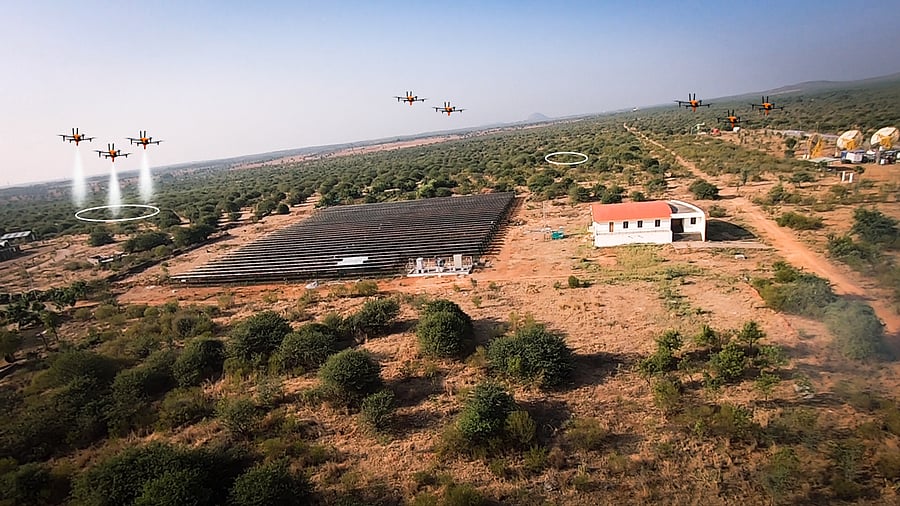
Three drone swarms test the proposed approach. The two targets for search and mitigation are marked as white circles by the swarms.
Credit: IISc
Bengaluru: As destructive wildfires emerge as a serious global threat, researchers at the Indian Institute of Science (IISc) have proposed multiple swarms of drones as a solution to tackle these natural disasters.
A team led by Suresh Sundaram, Professor in IISc’s Department of Aerospace Engineering, has envisioned the use of coordinated multi-swarm drones, to swoop in and quell forest fires. “By the time somebody identifies and reports a fire, it has already started spreading and cannot be put out with one drone. You need to have a swarm of drones. A swarm that can communicate with each other,” Prof Sundaram said.
The swarm-based search algorithm developed by the team is key to controlling the drones’ behaviour, IISc said. It would allow the swarm to communicate with each other and make independent decisions.
A swarm, comprising drones with cameras, thermal and infrared sensors, and temperature detectors, could be sent in to spot the fire. After discovering the fire, the drone closest to it becomes the swarm’s centre and attracts others towards it. Each drone will have autonomy to calculate the fire’s size and potential spread, and decide how many drones are needed to quench the fire.
“The drones figure out which cluster of fire is going to spread faster, and allocate the required number of drones to put out that fire while the others look for other fire clusters,” Prof Sundaram said. The drone approach makes decision-making decentralised, data-based, and aimed at maximum efficiency. The study was published in IEEE Transactions on Systems, Man, and Cybernetics: Systems.
To enable searching for fire in potentially large areas, the researchers took inspiration from the foraging behaviour of a marine predator, a flagellum called Oxyrrhis marina.
Josy John, PhD student at the Department of Aerospace Engineering, and lead author of the study, explained that the flagellum, when foraging, first takes longer steps to explore the area. Closer to the food source, it reduces the step length to explore the area in detail.
“The temperature sensors in the drones look for a minimum (threshold) value. When that is reached, the drones reduce their search step, because the fire is near,” John said.
The researchers have tested the AI-enabled fire detection using thermal cameras, and the payload drop mechanism for fire extinguisher deployment. Full-scale search and mitigation is yet to undergo field-testing.
IISc said such drone swarms could be helpful during natural disasters like floods and earthquakes, to locate survivors, deliver supplies, and boost communication.